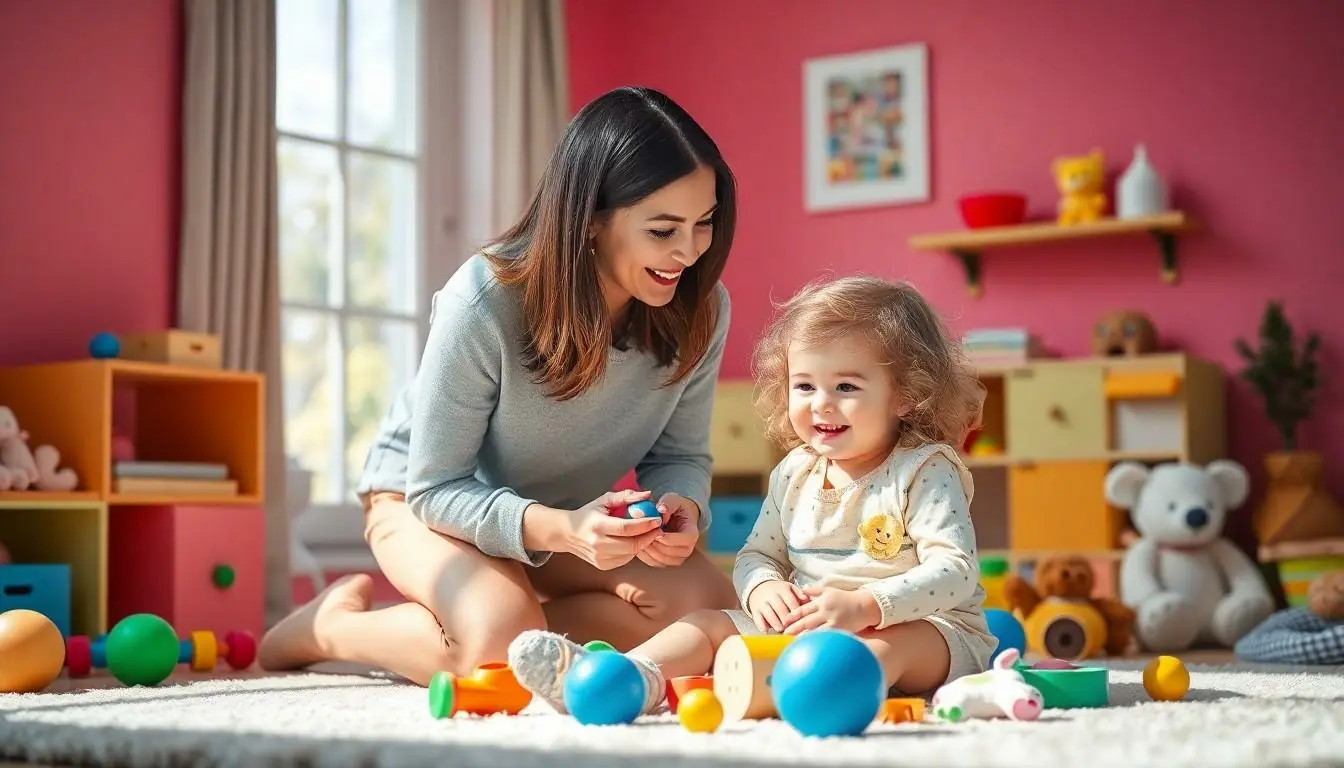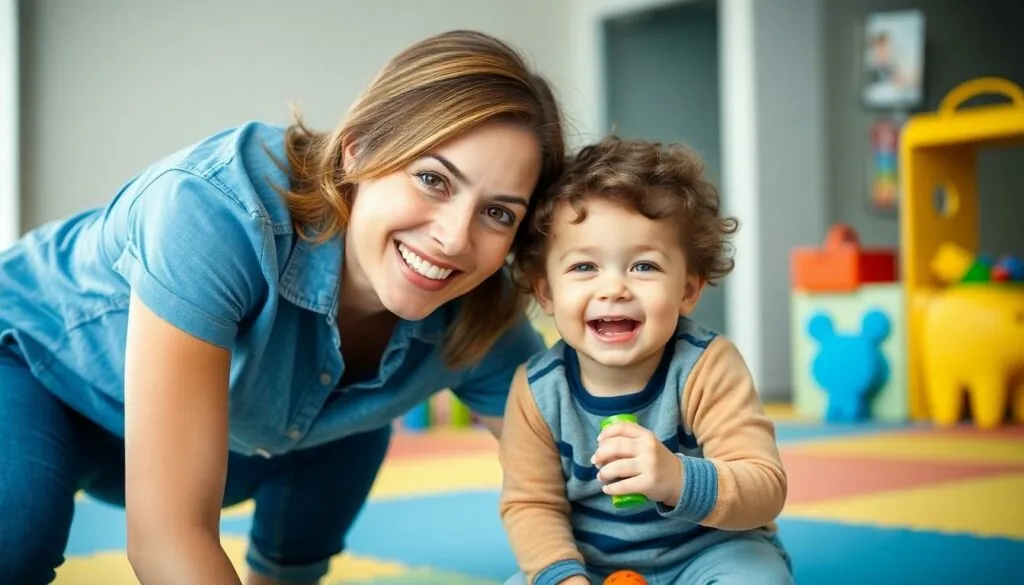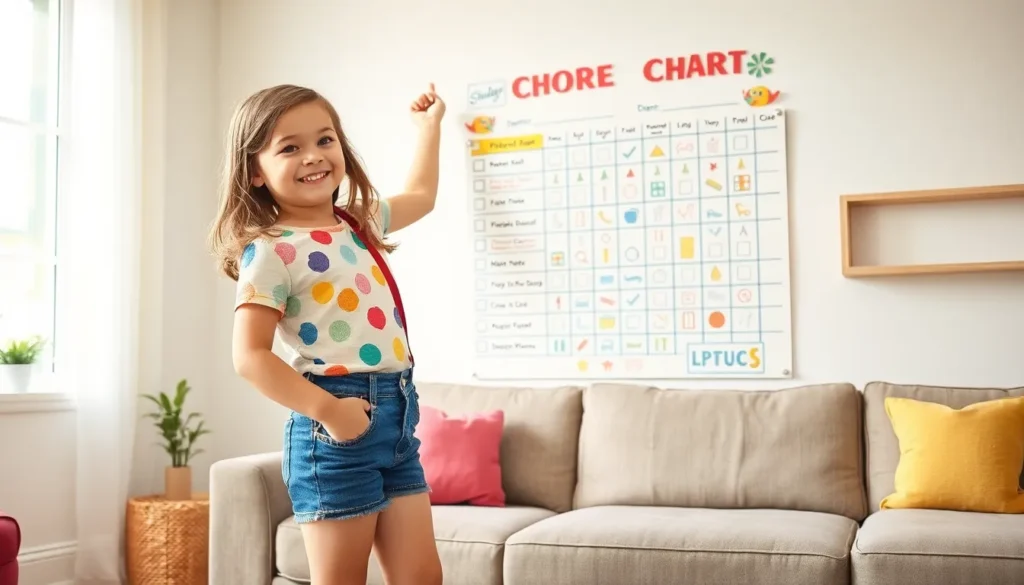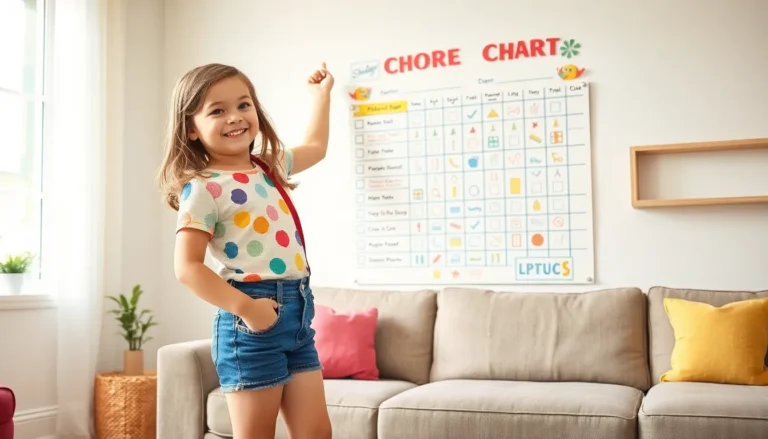Table of Contents
ToggleNavigating the wild world of toddlers can feel like trying to herd cats—cute, cuddly cats that throw tantrums over the color of their cereal. As parents dive into this chaotic yet rewarding phase, they often find themselves in need of a trusty guide. Fear not! With the right tips, even the most challenging moments can turn into laughter-filled memories.
Essential Parenting Tips for Toddlers
Establishing a routine helps toddlers feel secure. Consistent schedules for meals, naps, and play foster stability. Incorporating a visual schedule with pictures can further aid comprehension.
Setting clear boundaries is crucial. Toddlers thrive when they know the limits. Use simple language to explain rules, ensuring understanding and cooperation.
Encouraging independence fosters confidence. Provide opportunities for toddlers to make choices, such as selecting clothes or deciding between snacks. These small decisions empower them and develop decision-making skills.
Positive reinforcement motivates toddlers. Celebrate achievements, no matter how minor. Praising good behavior reinforces desired actions and boosts self-esteem.
Modeling behavior is influential. Toddlers imitate adults, so demonstrate qualities like kindness and patience. Use daily interactions as teachable moments for social skills.
Offering age-appropriate choices signifies respect for their autonomy. For example, choose between two toys or two activities, leading to greater satisfaction and willingness to cooperate.
Practicing patience remains essential. Moments of frustration can occur, so taking deep breaths or stepping back is beneficial. This approach helps maintain a calm environment.
Engaging through play stimulates learning. Use educational games to enhance cognitive development. Playtime is an excellent opportunity for social interactions and skill development.
Prioritizing communication aids emotional expression. Encourage toddlers to share feelings using words. This practice helps them articulate emotions instead of resorting to tantrums.
Maintaining a balance of discipline and love instills trust. Toddlers need both guidance and affection to navigate emotions effectively. Showing love reassures them amid challenges.
Understanding Toddler Behavior

Understanding toddler behavior is crucial for effective parenting during these formative years. Behavior changes can occur rapidly, influenced by developmental milestones.
Common Behavioral Stages
Toddlers experience various behavioral stages that reflect their growth. At approximately 2 years old, children often exhibit a strong sense of independence. They may assert themselves by saying “no” frequently. During this time, parallel play with peers becomes common as they learn to interact. Around age 3, imaginative play emerges, inspiring creativity and social skills. These stages can shift within weeks, requiring parents to adapt their approaches to meet evolving needs.
Dealing with Tantrums
Tantrums represent a normal part of toddler behavior and often stem from frustration. Recognizing triggers helps parents preemptively manage these outbursts. Offering choices during transitions can empower toddlers, reducing the likelihood of meltdowns. When a tantrum occurs, staying calm is essential. Acknowledge feelings while maintaining composure. Redirecting attention towards engaging activities can effectively distract and calm an upset child. Consistent strategies help toddlers navigate their emotions, turning challenging moments into opportunities for learning.
Effective Communication Strategies
Effective communication helps toddlers express themselves and understand others. Prioritizing clear interactions lays a foundation for language and emotional growth.
Encouraging Language Development
Fostering language skills starts with reading daily. Choose engaging books with vibrant illustrations to capture attention. Utilize repetition and rhythm to make words memorable. Singing nursery rhymes enhances vocabulary while making learning enjoyable. Describe everyday activities as they occur; this provides context for new words. Use simple phrases and ask open-ended questions to stimulate conversation. Celebrate every attempt to communicate; positive reinforcement builds confidence. Integrating diverse vocabulary boosts comprehension and encourages curiosity.
Active Listening Techniques
Active listening builds a strong connection between parent and toddler. Maintain eye contact to show engagement and importance. Paraphrase what the child says to validate feelings and demonstrate understanding. Encourage expression by prompting with phrases like “Tell me more” or “What do you think?” Maintaining a calm demeanor helps create a safe space for sharing. Reflecting emotions, such as saying “I see that you’re upset,” fosters emotional intelligence. Showing patience during conversations teaches toddlers that their thoughts matter. Engage in dialog to enhance comprehension while establishing a trusting relationship.
Creating a Safe Environment
Creating a safe environment for toddlers involves careful planning and attention to detail. Parents can significantly reduce risks by implementing specific safety measures throughout the home.
Childproofing Your Home
Childproofing plays a vital role in ensuring safety. Start by securing furniture to walls to prevent tipping. Safety gates can limit access to stairs and hazardous areas. Install outlet covers to eliminate shock risks, and keep small objects out of reach to avoid choking hazards. Store cleaning supplies and medications in locked cabinets. Regularly check for potential dangers, such as sharp edges or loose cords. Implementing these strategies creates a safer space for exploration and promotes independence.
Safe Play Areas
Safe play areas encourage toddlers to explore freely. Designate specific zones where children can engage in activities without hazards. Use soft mats or rugs to cushion falls, and ensure toys are age-appropriate to prevent accidents. Outdoor play spaces should offer secure fencing to keep children contained. Supervision remains crucial, even in safe areas, to ensure a quick response to unexpected situations. Regularly inspect play equipment for damage and replace worn items promptly. Establishing safe play zones allows toddlers to develop skills while minimizing risks.
Positive Discipline Approaches
Positive discipline helps guide toddlers toward appropriate behavior while fostering a loving environment. Effective strategies focus on clear communication and understanding.
Setting Boundaries
Establishing clear boundaries teaches toddlers about acceptable behavior. Parents should consistently communicate limits in a calm, straightforward manner. Age-appropriate expectations help toddlers learn about personal responsibility and choices. For example, if a child knows that they cannot climb on furniture, they are less likely to test that boundary. Reinforcement of these rules during everyday situations builds understanding and recognition of limits. Engaging them in discussions about boundaries encourages toddlers to participate, making them more likely to respect those limits. Consistency in applying boundaries provides a sense of security, which aids emotional development.
Reinforcing Good Behavior
Reinforcement of good behavior encourages toddlers to repeat positive actions. Parents can use praise, social approval, and small rewards to celebrate achievements. Immediate feedback strengthens connections between actions and outcomes. For instance, when a child shares toys with others, acknowledging that behavior helps them associate sharing with positive feelings. Parents should also model desirable behavior, as toddlers often imitate adults. Offering specific praise, such as “I love how you helped your friend,” increases clarity. Celebrating progress, regardless of how small it may seem, nurtures confidence and promotes an ongoing desire to engage in good behavior.
Parenting toddlers can be a rewarding yet challenging journey. By implementing effective strategies parents can navigate this phase with confidence. Establishing routines and setting clear boundaries fosters a sense of security while encouraging independence allows toddlers to explore their world.
Engaging in positive communication and active listening strengthens the parent-child bond. Creating a safe environment promotes exploration and learning while positive discipline nurtures good behavior.
With patience and love parents can transform everyday challenges into meaningful moments. Embracing this dynamic stage not only aids in a toddler’s development but also enriches the family’s experiences together.







